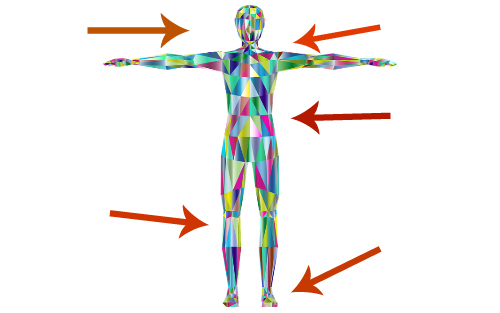By Georgianna Donadio, MSc, DC, PhD
 Given the way the health sciences have been taught in nursing and medical schools, it is perfectly understandable for physicians and nurses trained more than 25 years ago to think the placebo effect didn’t make sense and was perhaps a popular explanation for sudden healing – or a “spontaneous remission.” It is a leap for many to understand how a person think or believe something and that simple act of belief could heal them. That’s why the National Institute of Whole Health is using this article to explore what health coaches and nurses should know about our reality and the placebo effect of belief.
Given the way the health sciences have been taught in nursing and medical schools, it is perfectly understandable for physicians and nurses trained more than 25 years ago to think the placebo effect didn’t make sense and was perhaps a popular explanation for sudden healing – or a “spontaneous remission.” It is a leap for many to understand how a person think or believe something and that simple act of belief could heal them. That’s why the National Institute of Whole Health is using this article to explore what health coaches and nurses should know about our reality and the placebo effect of belief.
Researching Placebo Effect
Up until the last twenty or so years, research scientists did not have a grasp on how the brain and our emotions worked to create our reality. The subject of emotion has been and still is very much “uncharted waters” in behavioral science. However, what is well documented today is how the various brain waves function and portions of the brain control and stimulate thoughts, beliefs and feelings.
The “beta waves” are the brain waves that allow us to focus on the words in this blog and comprehend, in the moment, what is intellectually being communicated. These waves are produced in the frontal lobe, which is the seat of intellectual functioning. Thinking, analyzing, reasoning and so forth occur in this part of the brain.
The “alpha waves” which are the slower brain waves originate in the mid-brain and are the brain waves that allow us access to our unconscious thinking or what some refer to as the soul. All thought processes, be it from the beta wave or alpha wave region of the brain, are actually chemical reactions that produce specific proteins which communicate with our immune cell membranes and other cell membranes of our body.
Thoughts Are Powerful
The specific thoughts we think and the region of the brain they originate in have an identifiable chemistry that has been shown to create dramatic changes in our physical bodies. In Dr. Paul Pearsall’s groundbreaking book “The Hearts Code,” he tells many amazing mind/body stories.
One in particular is a striking example of how powerful thoughts and images are. This story is about a schizophrenic patient who demonstrated completely different disease states depending on the personality she was exhibiting. Ultra sounds, cat-scans, lab tests all confirmed that one of her personalities had a massive cancerous tumor and yet when she went into a different personality state all of her previous pathology disappeared as well.
Our brains are the ultimate manifestors of matter. The chair you are sitting on was a thought before if became that chair. Thoughts are “things” – and thoughts in action are what manifest reality. A previous blog discussed a woman who was cured of her stiffness after the sham surgery. Her mind manifested a different set of thoughts through her hope and expectations for the outcome of the surgery. Her brain waves and proteins created positive chemistry, which communicated with her immune system through its cell membranes. The results – she became healthier and could “stride across the room.”
The idea of mind over matter is a powerful one. This science, and our understanding of its amazing chemistry, is in its infancy stage. In the future we will take the possibility of healing ourselves with thought and imagery for granted just as we now do about people having an organ transplant – which was unheard of not that long ago.
In the meantime, we can all improve our health coaching and nursing success by encouraging our clients and patients to improve their “self-speak,” reinforcing their bodies and minds with positive words, thoughts and images.


